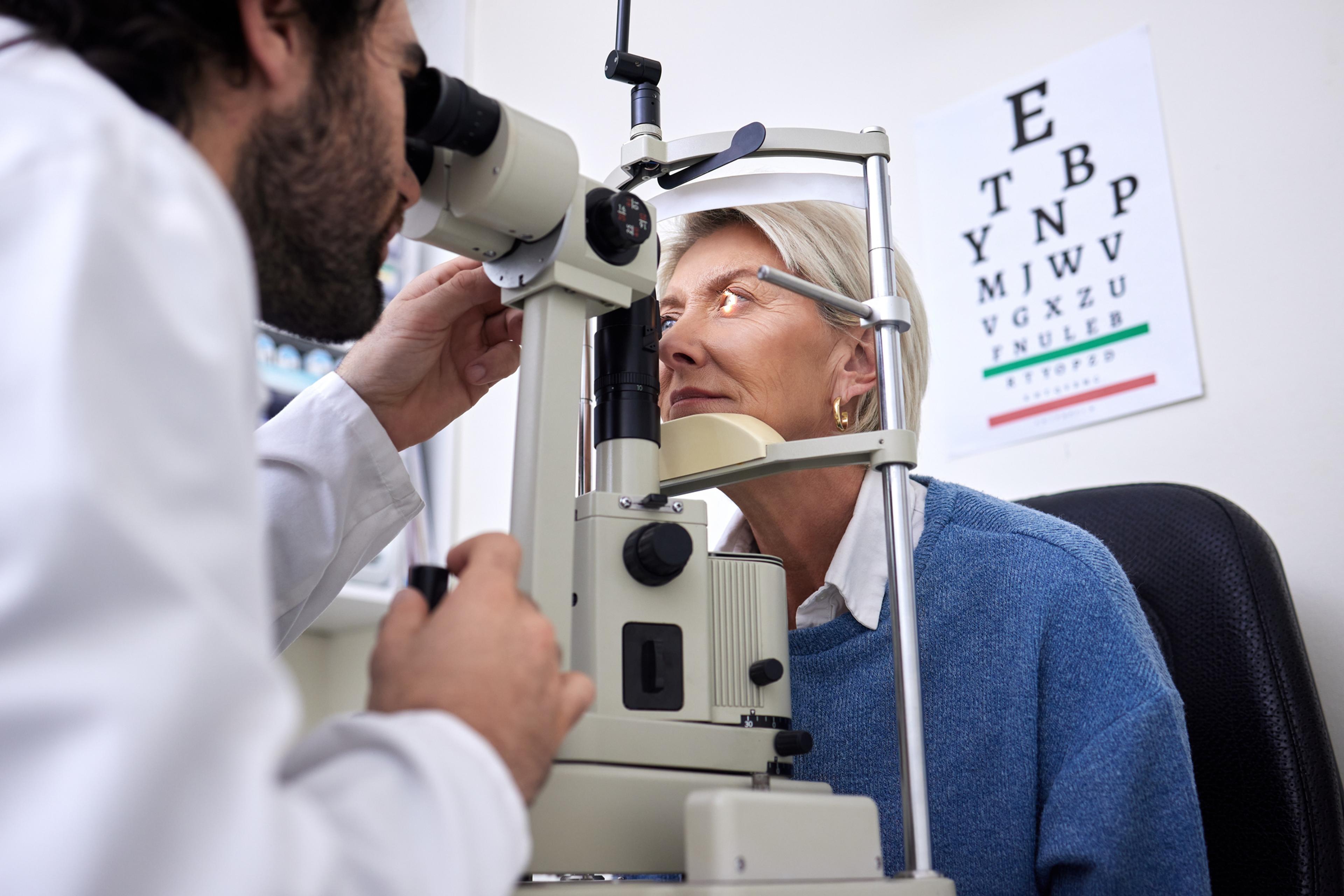Seven Eye-Opening Ways to Save Your Vision

Gina Lynem-Walker
| 4 min read

It’s easy to take good vision for granted – until it’s no longer there. Bad lifestyle habits can jeopardize good vision and negatively impact quality of life.
Approximately 12 million people 40 years and over in the United States have impaired vision, according to the U.S. Centers for Disease Control and Prevention (CDC). This includes one million individuals who are blind, three million who have vision impairment after correction, and eight million who have vision impairment due to uncorrected refractive error. It becomes increasingly important to protect eye health with each passing year.
These seven tips can help:
1. Eat a balanced diet
Diet can have a direct correlation to vision quality. Certain vitamins and minerals found in food may play a role in preventing cataracts and age-related macular degeneration, two common causes of vision problems. Research shows certain nutrients can positively impact eye health. These include:
- Vitamin A: Apricots, carrots, mangos, raw red peppers, raw cantaloupe
- Vitamin C: Broccoli, Brussels sprouts, grapefruit, kiwi, oranges
- Vitamin E: Almonds, peanut butter, spinach, sunflower seeds
- Lutein, zeaxanthin: Broccoli, Brussels sprouts, collard greens, corn, eggs, kale, nectarines, oranges, spinach, squash
- Omega-3 fatty acids: Flaxseed, halibut, salmon, tuna
- Zinc: Chickpeas, oysters, yogurt
2. Limit or quit tobacco use
Tobacco use and cigarette smoking can lead to vision loss or blindless. In fact, smoking increases the risk of age-related macular degeneration, cataracts, glaucoma and diabetic retinopathy and dry eye syndrome, which is more than twice as likely to impact smokers as non-smokers.
3. Have regular eye exams
An estimated 93 million adults in the U.S. are at high risk for serious vision loss, but only half visited an eye doctor in the past 12 months, according to the CDC. Comprehensive dilated eye exams not only determine whether a person could improve their vision with glasses or contact lenses, but they help detect many of the common eye diseases listed above, which often have no warning signs.
4. Maintain a healthy weight
When a person is overweight or obese, they are at increased risk of developing diabetes, which is commonly linked to eye problems. Maintain a healthy weight by eating a well-balanced diet and exercising regularly. The Physical Activity Guidelines for Americans recommends 150 minutes of moderate to intense physical activity and two days of muscle strengthening activity for adults.
5. Manage blood sugar
Diabetes can lead to blurred vision. According to the CDC, 90% of blindness caused by diabetes is preventable. High blood sugar can cause swelling in the lens of the eye, hindering the ability to see. Speak with a primary care provider about setting and reaching goals to manage blood sugar, blood pressure and cholesterol.
6. Limit screentime and take breaks
Even two hours of screen time each day can lead to dry eyes, blurred vision, headaches, back and neck pain. Collectively, this is known as digital eye strain. More than 104 million working-age Americans spend more than seven hours a day in front of screens, resulting in $151 billion in health care costs relating to unmanaged screen time symptoms.
Combat this condition at home and at the office by:
- Making sure chairs are comfortable and adjusted to a proper height
- Adjusting computer screens so they are 15 to 20 degrees below eye level and 20 to 28 inches from the eyes
- Taking 15-minute breaks to rest the eyes after every period of two consecutive hours of device use
7. Wear sunglasses and protective eyewear.
Protective eyewear – which includes safety glasses and goggles, safety shields and eye guards – can keep the eyes safe when playing sports. They also protect the eyes when engaging in home activities like using hardware tools and mowing the lawn. Most protective eyewear lenses are made of polycarbonate, which is 10 times stronger than other plastics.
Individuals should also wear sunglasses that block 99% to 100% of the sun’s UVA and UVB radiation while hanging around outside on a sunny day. And remember to never look directly at the sun.
Gina Lynem-Walker, M.D., is an associate medical director at Blue Cross Blue Shield of Michigan. For more health tips and information, visit MIBluesperspectives.com.





